

| Click for larger image | |
|---|---|
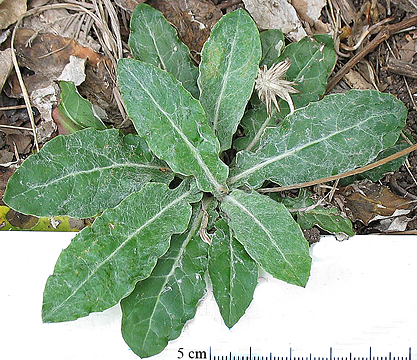
|
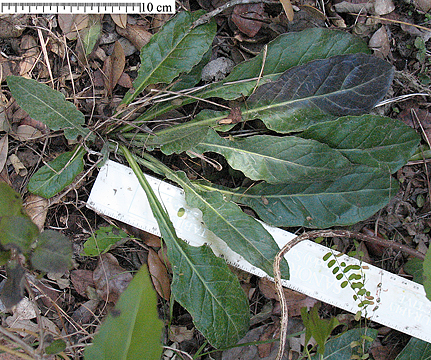
|
| C. carduacea | C. texana |
Both species are acaulescent perennial herbs, with leaves forming a rosette, typically flat on the ground when mature.
The leaf bases of C. carduacea tightly overlap in such a manner that only after pealing away the individual leaves of the rosette does any hint of the stem remain. In the image below 16 leaves were removed to reveal the stem. The first 15 leaves are shown on a separate page.
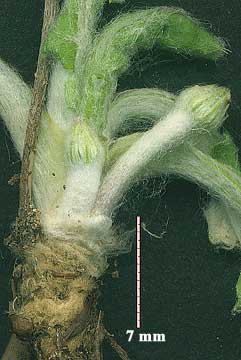 |
C. carduacea stem c. 7 mm after removal of 16 leaves. Seen are 2 developing buds, 5 developing leaves. January 22, 2011 (click to enlarge) |
The leaves of C. texana are larger than those of C. carduacea and typically develop petioles, creating a somewhat sparse rosette; those of C. carduacea are typically sessile, but may develop short petioles, giving a densely clustered rosette. Leaves are obovate to elliptic (less commonly ovate with C. texana) with undulate, mucronulate margins, more strongly lobed toward the bottom, somewhat erect when young, apex acute with a small mucro, the base cuneate in overall form.
The following photo shows plants that were moved into pots in April 2010 as small plants of roughly the same size and were kept adjacent into late spring 2011 (and continuing). They have received the same light, water and temperature conditions, including being moved into a greenhouse during hard freezes in February 2011. The leaf differences have thus not resulted from differing environments, and are typical for the two species.
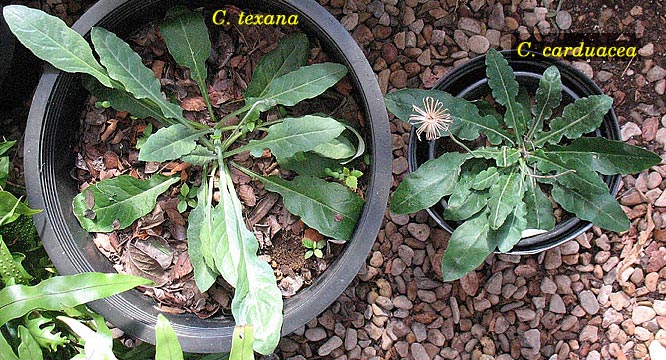
Field measurments of leaf lengths were made at three different times, each using a different approach: (1) the longest leaf of a plant was measured at early antheis; (2) the longest leaf in a group of plants in a small area was measured; (3) randomly selected mature leaves of several plants were measured. Leaves collected as in (1) and (2) were always the oldest, bottommost, and these leaves also had the longest petioles — possibly indicating that growth continues over the life of the leaf, and primarily at the leaf base. The results are given in the following table.
| C. carduacea | C. texana | |||||
|---|---|---|---|---|---|---|
| method | avg. | range | num. lfs | avg. | range | num. lfs |
| anthesis | 8.6 cm | 4.5–20 cm | 32 | 14.8 cm | 6.5–24.5 cm | 20 |
| longest | 15.5 cm | 6.2–16.2 cm | 30 | 21.4 cm | 16–26.2 cm | 9 |
| selected mature | 10.9 cm | 5.4–22 cm | 32 | 17.1 cm | 5.5–26.7 cm | 19 |
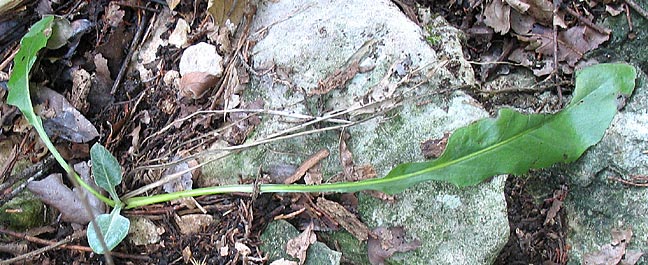
The issue of petiolate vs. sessile is discussed on a separate page.
Only minor differences in general leaf shape and vestiture were noted. They were typically obovate to elliptic with undulate margins, more strongly lobed toward the bottom, and abruptly narrowing toward the point of attachment, at times developing into a winged petiole. The upper surface is glabrescent, at times with a sparse layer of wool persisting. The lower surface is tomentose, becoming thick with age. Primary and lateral veins are visible on both surfaces.

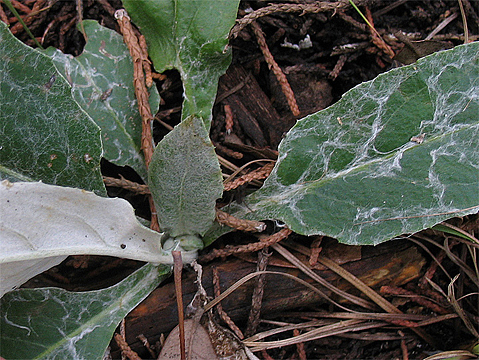
Leaf tip & margin details.
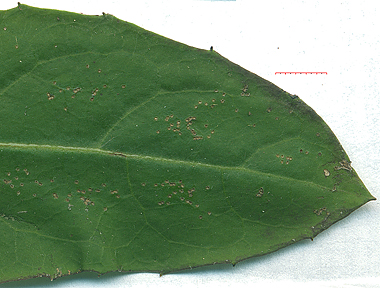
|
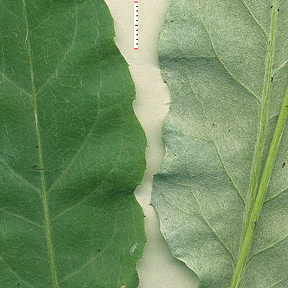
|
| C. carduacea | C. texana |
|---|